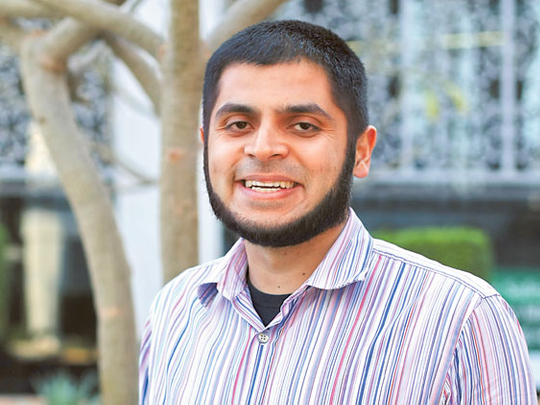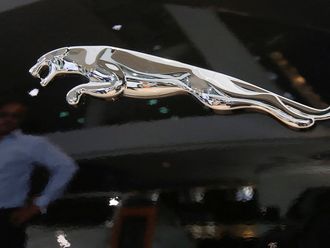
Omar Kassim started JadoPado.com (www.jadopado.com) envisioning an ‘Amazon-like’ e-commerce portal for the Middle East. He leveraged family capital mobilising human resources seeking to create a differentiated customer experience.
How did JadoPado emerge?
JadoPado was conceptualised thinking about business ideas in the technology space. A thought recurred as to why no one had done a serious scalable e-commerce business based on a unique consumer experience for the region. We spent 6 months researching, designing and building the portal, and launched the initial version of the site in early 2011.
One little advantage that we had over a typical start-up was a corporate parent that had capital available and the willingness to allocate it to new businesses. We managed to find some great talent, that turned into a great team which allowed us to figure out whether the idea made sense and embark on generating revenue pretty much from day one.
From a family business perspective, we backed an idea to execute, learn, and grow in the technology space. It was clear from the outset that the venture needed to have an identifiable revenue stream with a fairly clear path to profitability over a reasonable time frame.
You sound very clinical — idea, resources, revenue, risk and time to develop. Was it a head or a heart issue at all?
It’s always a bit of both. Technology is something that I’ve been very passionate about from a young age. And while I’ve always wanted to and would love to be doing things in the hardware space, it was clear that we need to start with something that was realistic, an entry point that could potentially lead to other opportunities in the future.
It started with what at the time seemed to be a simple premise — Why hasn’t anyone done an Amazon in the Middle East? I didn’t understand then, but I get it now. It’s extremely challenging to build a business in a sector that is yet to define itself in the region. Exciting, but challenging.
Journey of product development.
It was an organic journey of discovery over six months. We started off with a few concepts of the site and the initial user experience, hired a couple of engineers and started to build it out.
The little details have always mattered and continue to shape our business today. Whether it be the size of a button, or how many fields we decided to put into the checkout process, anything that you put in front of your customers matters.
The JadoPado logo was inspired by the old Apple logo. A company that I’ve been a fan of, well before they went mainstream.
We spent a lot of time thinking through how we felt customers should experience JadoPado. It eventually boiled down to asking a simple question — How would we like to be treated? We built and continue to build on the basis of that question. It’s worked quite nicely as a guiding principle.
The policies that we put together, such as our returns policy were almost an antithesis to what our competition in the retail space had in place at the time.
When you use ‘we’ do you mean the family or Omar?
We is all of us, the family, the team and myself.
The family has been an incredible catalyst in allowing JadoPado to happen, but JadoPado remains my responsibility to execute and deliver.
In some cases a business is inspired and driven by an individual, but it always comes does to the team. You’d be nowhere without them. They’re on the front lines, executing every single day.
How did you get into a consumer-facing business?
It was the nature of opportunity.
As a family, we’d never done a consumer-facing business previously. One of our first hires was a ‘Community Manager’ of sorts, a role that eventually turned into a social media buzzword. We started building and engaging with potential customers through social media very early on, almost before we’d actually started built anything.
It’s a lot of pressure to perform when your business is available for anyone to look at and judge. A focus on the details pushes us to try to get as many things right as possible, and when we do get things wrong, apologise and correct them — fast.
Today’s businesses are built in the public eye. Everything is visible and scrutinised since a lot of communication takes place publicly. Reputations take years to build and mere seconds to destroy. It forces you to ensure that you build the right experience and live true to your promise to your customers.
How do you manage this?
We spend a lot of time building and cultivating a community by having honest conversations with our customers, while trying out different tools to manage those conversations.
For example, we use a tool that pulls information from different channels such as Twitter, Facebook, Live Chats and emails into a dashboard from where we try to manage conversations across multiple channels.
Our responsiveness matters a lot. If a consumer has unfortunately had a negative experience and has decided to voice his or her feelings publicly or privately, then how quickly and effectively we deal with that issue is critical.
Prevention is always better than cure. Rather than trying to solve the issue after it occurs we focus on trying to get the experience right the first time.
We’re always discussing under promising and over delivering. Never, ever say something that you can’t deliver on.
How did you pitch to the family?
It wasn’t really a pitch. We put a financial model together, discussed the idea and decided to kick ahead. I was involved in running a part of the family’s business out in the region when we started JadoPado. The initial capital was available and the idea seemed feasible so we decided to go out and do it.
E-Commerce is a low margin business. How will you make money?
JadoPado is a category-focused play in the Electronics & IT space. Margins are definitely very tight. We’ve continued to focus on building a differentiated proposition.
For example, we don’t sell anything that we don’t have in stock to try to ensure that we deliver product as quickly as possible. Last summer, we launched JadoPado Shield, in partnership with Allianz Global Assistance. A combined accidental protection and warranty product. The first of its kind in the region. Buy a device from us and we’ll cover you against accidental damage, liquid damage and cracked screens. For free.
The industry is at a very nascent stage, we’re very early in what should be a seven to ten year journey.
It’s a marathon, not a sprint.
The strategies made the business investment heavy.
The decision to invest in inventory, a delivery fleet and warehousing was a deliberate attempt to execute a differentiated business model versus our competition at the time.
How could we convince customers to buy online versus jumping in their car and driving out to the nearest mall? The idea was to build and deliver an instant gratification experience.
We held inventory to be able to execute our same day delivery model. It remains difficult to get visibility into the supply chain in the region. Some vendors don’t have systems in place, others who do either can’t provide you visibility or don’t want to. Holding inventory was an expensive, but necessary solution.
We’ve continued to evolve our model and recently switched away from our own delivery fleet and moved over to a third party only model. The delivery fleet served it’s purpose in getting the word out about the business and we eventually came to the realisation that delivery is not our core proposition.
We’re an e-commerce business, and delivery in the region is a solved problem. We decided to continue to focus our efforts in building out JadoPado as a highly differentiated offering.
What thoughts went into designing the user experience?
We like asking lots of questions. Why is something this way? Could it happen another way? Do we really need that bit of extra information or could we do without it?
The goal was and remains to give customers absolutely the best experience possible and more importantly getting out of the way when a customer has decided to make a purchase. Make it super easy.
We’re always redesigning and rebuilding. For example, we’re about to launch our fourth major redesign to our checkout process.
How do you iterate the user experience? Could you give us an example?
Customers give us a lot of feedback whether it be over social media, email or over the phone. Very early on we had a lot of queries about when a particular product would be back in stock. So we decided to build something to automate the process.
We mocked up a simple system to allow a customer to sign up for a back in stock alert. Hit a button on the product page, sign into your account and you’re done. We’d then drop the customer an email as soon as that item is available again. Then we went out, built it and pushed it out.
We used that bit of feedback to eventually build out other features such as price drop alerts and so on.
How did you go about doing the business? Did you take a decision to create a team?
I like to think that from a technology perspective I have a fair understanding of the infrastructure needed to run the business. We needed to access a strong marketing and design resource. We ended up poaching in-house. Karlo is now a Co-Founder and remains at JadoPado.
We hired an internal engineering team. We decided not to outsource any component of the business. I’ve always felt that the more control you have, the easier it is to deliver on a great experience.
It’s somewhat easier early on, but becomes difficult to scale.
When we’ve had to partner or bring in outside help, we’ve always pushed them to hopefully live by and aspire to our standards.
Inventory buying is an art. How do you decide what to buy and how much to buy?
It’s challenging. Initially we focused on product that we knew would sell and kept one or two pieces of them in stock. As a long term Apple enthusiast we started with their product range and took it from there.
We hired externally to bring the necessary skill set on-board. We got lucky and ended up with a small but highly skilled team who’ve had a mixture of large retail and wholesale product sale experiences.
We spend time trying to understand and source products that are not available locally while combining it with selling products that we’re personally passionate about.
Investment?
We’ve allocated $3 million for the business to date.
Has the business crossed the bridge of sustainability?
It is work in progress. We’re pretty close. Hopefully.
Team size?
15 at the moment. This has grown and shrunk over time.
Any surprises when you started executing?
Fraud and the extent of it threw me initially. We were very disheartened when it happened the first time.
We decided to explore the system and executed a couple of sting operations with the police to catch some of the culprits. Their cyber crimes unit is absolutely fabulous. Those cases went to prosecution, allowing us to understand the effectiveness of the law.
We took those experiences and went back to the drawing board and eventually ended up building a verification system for card usage on the site, complemented with other processes.
You can’t hit pause when something isn’t going the way you want. We had to think on our feet and build out a solution while allowing the business to continue to run.
Was anything easier than expected?
Not really.
Entrepreneurship and businesses are like roller coasters. You have these incredible snapshot moments that make for great memories, while there are other moments where it feels murky and difficult to breathe. You struggle and push hard to come out on the other side.
It’s important to not give in. Ever.
Changes in the idea?
It’s always evolving, but the central defining theme of building a great e-commerce experience hasn’t changed.
What keeps you tense about the business?
Lots of things, but it usually boils down to being able to survive.
Will we be able to crack the profitability barrier that our industry struggles with? And if we do so, can we turn JadoPado into a world class organisation?
As with any business it is always a cost versus time trade-off. Apply more capital and potentially shorten the time frames but while risking the entire business. You need to arrive at the right balance.
Entrepreneurship teaches much patience. How much time have you given yourself?
3 years to get it right. We’re almost getting to that point, and we’re close to that “getting it right” moment.
Relationships with suppliers.
It was tough initially, but over time the support has been tremendous. Everyone sees e-commerce as a great opportunity but aren’t quite sure when it’ll be the next big thing.
It’ll sort of sneak up on you and be the next big thing before anyone realises that it’s already happened.
When you started where there any naysayers?
Lots of them. Fortunately, family money is patient capital.












